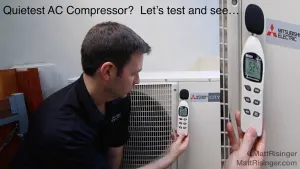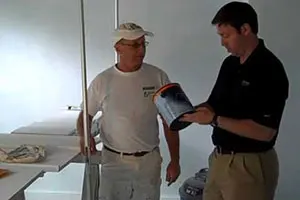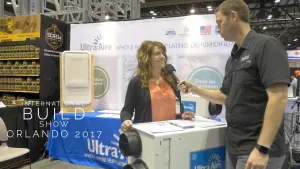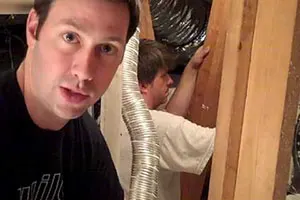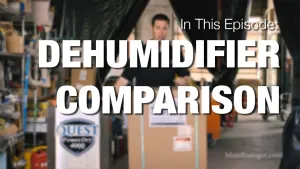I just completed my first house using the Perfect Wall method invented by Building Science Corporation. Perfect Wall is a method of building that results in a super-tight envelope with thick exterior insulation. We didn’t specifically design this house to meet Passive House standards, but the results are very close.
One big benefit for a super tight & insulated house is that you can severely downsize the HVAC system, and use generally use less expensive systems. Here’s my 4 keys to designing an HVAC system for an Ultra-Efficient House.
- Get a good HVAC designer involved! I use Positive Energy here in Austin for my HVAC designs. They first start with an energy model of the house, then do a thorough Manual J (HVAC Load Calculations) to determine the size of the system. I usually meet them after those two models are produced to discuss the system options. In this case, we had very low loads so a simple system was the way to go.
- Consider Ductless. Traditional houses ran ducts near windows & doors to counteract the heavy loads coming through those openings. In this Perfect Wall house we are super air tight and we were judicious in the design with regards to how much glass we used. A ductless mini-split system was the perfect system. The house was only 1700 square feet on two levels. We used a three head Mitsubishi system tied to one variable capacity outdoor unit. Because we are in a Hot/Humid climate zone we also added a supplemental Dehumidifier. We use a very efficient Santa Fe Compact 2 unit that removes 70 pints of water/day and is Energy Star rated. This stand-alone Dehum is originally intended for a basement or crawlspace, but works great for this application and takes up very little space.
- Fresh Air. Built Tight, Ventilate Right! We want to build the tightest envelope we can, then bring in fresh air on our terms! This house had a tight budget so the budget friendly ERV from Panasonic was a perfect fit for fresh air. This little Energy Recovery Ventilator has three setting for fresh air depending on your needs or size of house. It runs at 10, 20, and 40CFM of supply/exhaust. As the two air streams cross in the core this unit has the ability to exchange heat & moisture. In theory, the humid air coming in will shed some of it’s moisture to the exhaust air. I’ve used this unit in a dozen houses and for the money it’s hard to beat.
- Counter Stack Fan. Two story houses are notorious for temperature stratification (meaning it’s typically hotter upstairs). To counter this effect we used a dedicated in-line Panasonic 120CFM exhaust fan that moves air from the tallest part of the house back downstairs to the laundry room where the ERV & Dehum are located. Granted there is a hit in the comfort of that room, but we felt like that was the right place to do it. Louver doors into the Laundry space allow that air to get back to the main spaces where the mini-split heads can condition them.
If you follow these four Keys you’ll end up with an efficient & comfortable BUILD!

 Share on facebook
Share on facebook Tweet
Tweet Email
Email Share on Linkedin
Share on Linkedin



